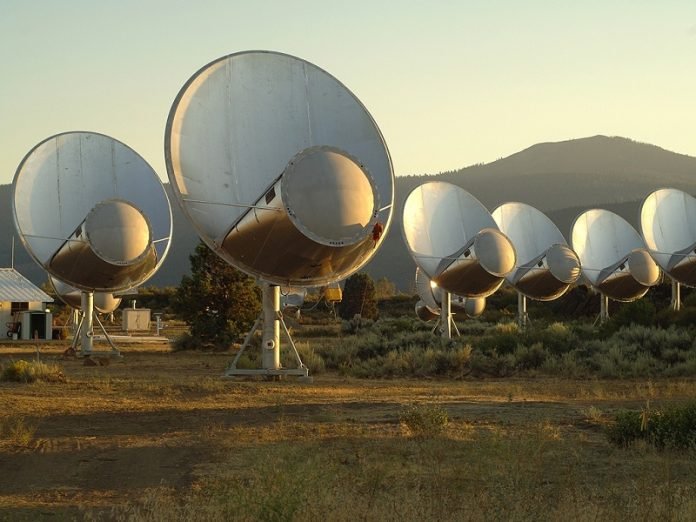
In a recent study published in The Astronomical Journal, a researcher from EPFL discusses the potential reasons why we haven’t received technoemission, also called technosignatures, from an extraterrestrial intelligence during the 60 years that SETI has been searching, along with recommending additional methods as to how we can continue to search for such emissions.
Dr. Claudio Grimaldi, who is a guest scientist at the Laboratory of Statistical Biophysics at EPFL and sole author of the study, suggests that Earth has not received a technoemission simply because Earth could be in what he refers to as a “void space”, meaning the area of space that Earth resides in has been devoid of technoemissions.
“If it is true that we’ve been in a void region for sixty years, our model suggests that there are less than one to five electromagnetic emissions per century anywhere in our galaxy.
This would make them about as rare as supernovas in the Milky Way,” said Dr. Grimaldi.
For the study, Dr. Grimaldi developed a model that assumed the existence of technological “emitters” of extraterrestrial origin that are constantly broadcasting emissions and are equally dispersed throughout our Milky Way Galaxy.
In the end, Dr. Grimaldi came up with three viewpoints of optimism regarding how long until Earth will detect a technoemission, which he refers to as a “crossing event”: an optimistic timeframe of 60 years from now, a moderately optimistic timeframe of 170 years from now, and a marginally optimistic timeframe of 1800 years from now.
The study concludes by emphasizing the ideas presented could be either true or false but suggested that hunting for technoemissions should go beyond SETI searches while focusing on more “commensal investigations, i.e., searching for technosignals from data collected by telescopes performing other observational activities, rather than investing telescope time in active SETI searches.”
One such option is the privately funded Breakthrough Listen project that is conducting the most extensive search for technoemissions to date, which was started in 2015 and is slated to run until 2025.
Using radio telescopes that whose sensitivity is 50 times greater than current telescopes committed to searching for extraterrestrial intelligence, Breakthrough Listen is surveying 1,000,000 of the Earth’s closest stars, along with scanning the center of the Milky Way and what’s known as the galactic plane.
The search even scans for emissions from 100 of the Milky Way’s closest galaxies. This study also comes as exoplanets are being discovered almost daily and over 5,300 have been confirmed as of this writing.
Dr. Grimaldi emphasizes that “the truth is, we don’t know where to search, at which frequencies and wavelengths.
We are currently looking at other phenomena using our telescopes, so the best strategy might be to adopt the SETI community’s past approach of using data from other astrophysical studies – detecting radio emissions from other stars or galaxies – to see if they contain any techno-signals and make that the standard practice.”
Two of the most profound ideas pertaining to why we haven’t detected a technoemission from an extraterrestrial intelligence are the Fermi Paradox and Drake Equation, and much like this recent study, both ideas present varying degrees of optimism about whether we’ll ever detect such a technoemission.
While the Drake Equation presents a plethora of variables to attempt to calculate the number of extraterrestrial technological civilizations in the Milky Way Galaxy, the Fermi Paradox presents a less optimistic argument as it is built on the question posed by Dr. Enrico Fermi, “where is everybody?”, while presenting hypothetical explanations for the reasons why we haven’t heard from such a civilization.
One such explanation argues that civilizations inevitably destroy themselves in a short time after achieving technological milestones, including spaceflight or radio technology, which was also echoed by Dr. Carl Sagan.
Regarding the positive or negative interpretations of his conclusions, Dr. Grimaldi laughed saying, “This is something we need to think about. We may have been unlucky in that we discovered how to use radio telescopes just as we were crossing a portion of space in which electromagnetic signals from other civilizations were absent.
To me, this hypothesis seems less extreme than assuming that we are constantly bombarded by signals from all sides but are, for some reason, unable to detect them.”
Why haven’t we detected a signal from an extraterrestrial technological civilization and when will we? Are we truly alone in the universe, or is it teeming with civilizations like our own? Only time will tell, and this is why we science!
As always, keep doing science & keep looking up!
Written by Laurence Tognetti.



